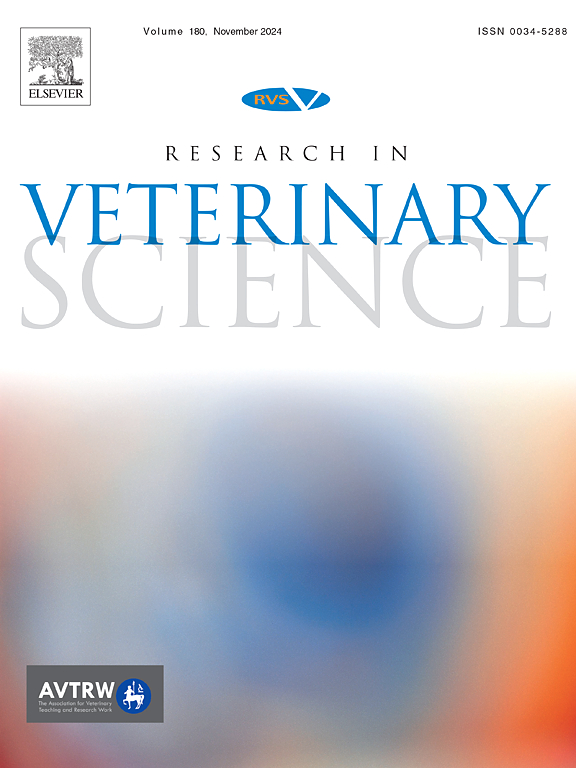Genome-wide association analysis reveals genetic loci and candidate genes for white diarrhea in Jingyuan chickens
IF 2.2
3区 农林科学
Q1 VETERINARY SCIENCES
引用次数: 0
Abstract
In order to investigate the basic genetic structure of dysentery in Jingyuan chickens and to explore the genetic markers associated with dysentery resistance in chickens, the present study was based on the genome-wide association analysis (GWAS) technique to investigate the candidate SNPs and genes associated with dysentery resistance in Jingyuan chickens, and a total of 12 SNPs were associated with dysentery resistance in Jingyuan chickens. In addition, some important candidate genes inciuding frizzled class receptor 4 (FZD4), DDB1 and CUL4 associated factor 13(DCAF13), regulating synaptic membrane exocytosis 2 (RIMS2), transmembrane protein 8C (TMEM8C), and RIC1 homolog (RIC1) were identified by selection signal analysis, gene annotation, and enrichment analysis. These results can be used as potential molecular selection markers for chicken dysentery resistance in Jingyuan chickens in order to improve the breeding of disease resistance in Jingyuan chickens.
求助全文
约1分钟内获得全文
求助全文
来源期刊

Research in veterinary science
农林科学-兽医学
CiteScore
4.40
自引率
4.20%
发文量
312
审稿时长
75 days
期刊介绍:
Research in Veterinary Science is an International multi-disciplinary journal publishing original articles, reviews and short communications of a high scientific and ethical standard in all aspects of veterinary and biomedical research.
The primary aim of the journal is to inform veterinary and biomedical scientists of significant advances in veterinary and related research through prompt publication and dissemination. Secondly, the journal aims to provide a general multi-disciplinary forum for discussion and debate of news and issues concerning veterinary science. Thirdly, to promote the dissemination of knowledge to a broader range of professions, globally.
High quality papers on all species of animals are considered, particularly those considered to be of high scientific importance and originality, and with interdisciplinary interest. The journal encourages papers providing results that have clear implications for understanding disease pathogenesis and for the development of control measures or treatments, as well as those dealing with a comparative biomedical approach, which represents a substantial improvement to animal and human health.
Studies without a robust scientific hypothesis or that are preliminary, or of weak originality, as well as negative results, are not appropriate for the journal. Furthermore, observational approaches, case studies or field reports lacking an advancement in general knowledge do not fall within the scope of the journal.
 求助内容:
求助内容: 应助结果提醒方式:
应助结果提醒方式:


